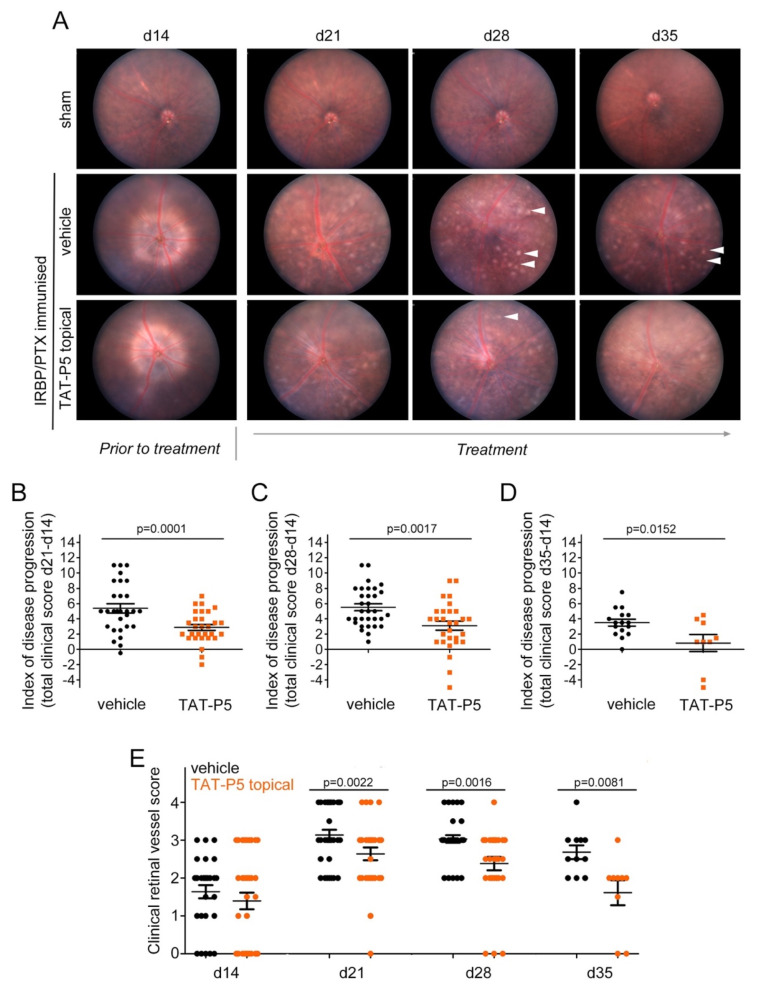Figure 7.
GEF-H1 antagonist TAT-P5 inhibits progression of EAU. EAU was induced in mice and induction of disease was evaluated at day 14 post-immunization. On day 15, daily topical eye drop treatment with 6μL TAT-P5 (0.04 μg/μL) or saline solution (vehicle control) commenced (16 immunized mice were used for each type of treatment over 5 experiments). Disease progression was assessed by fundoscopy every seven days until days 28 or 35 (A). Fundus images were scored as described in Material and Methods, and the index of disease as a change from day 14 to 21 (B, n = 29 eyes per condition), to 28 (C, n = 32 and 29 eyes per condition, respectively) or to day 35 (D, n = 16 and 9 eyes, respectively) was calculated. At day 14, the total clinical score was <10 for all mice included in the study. (E) Clinical vessel scoring as one of the four parameters of the fundus scoring applied. For the breakdown of the other clinical parameters, see Figure S4. Statistical significance was assessed using t-tests. Indicated are means ±SEM. ANOVA tests resulted in p < 0.0001 for the time course of disease index (shown as separate panels in B–D) and for the retinal vessel score time course (panel E). Sham immunized mice served as negative controls. Arrowheads indicate immune cell infiltrates.

